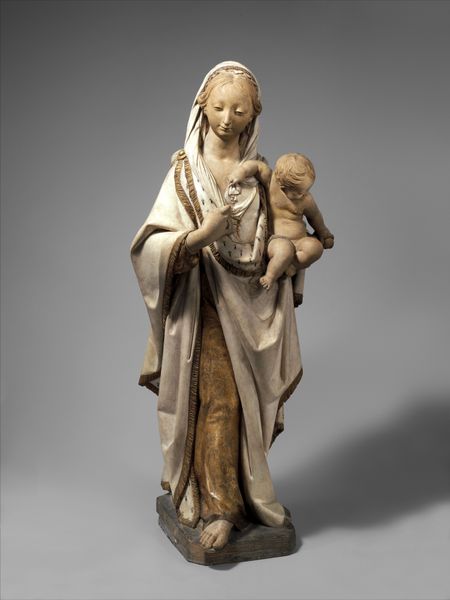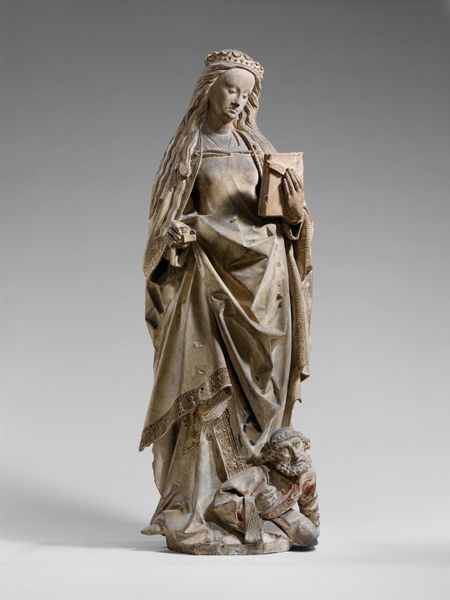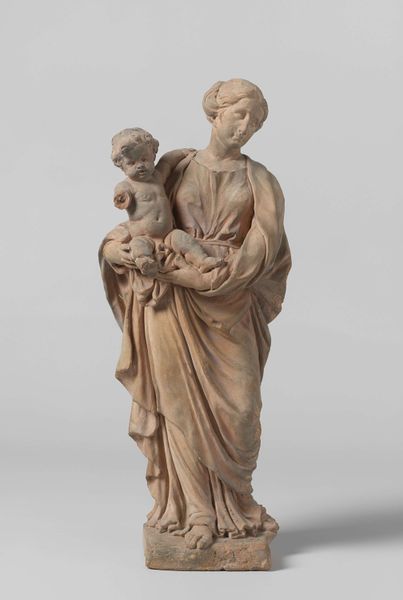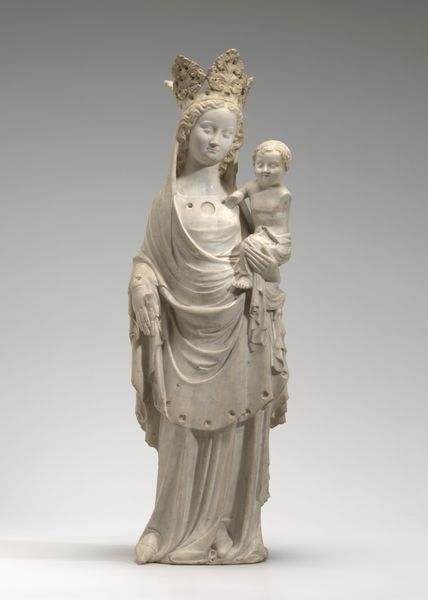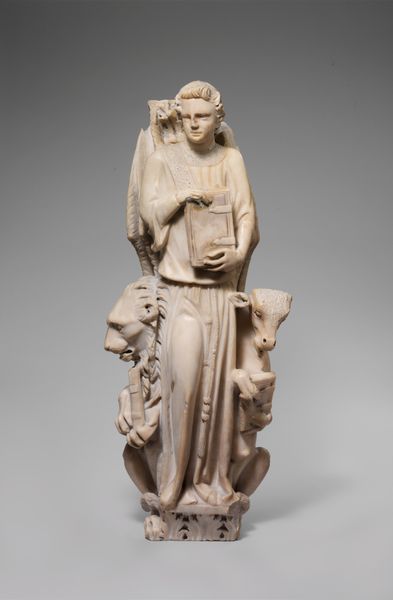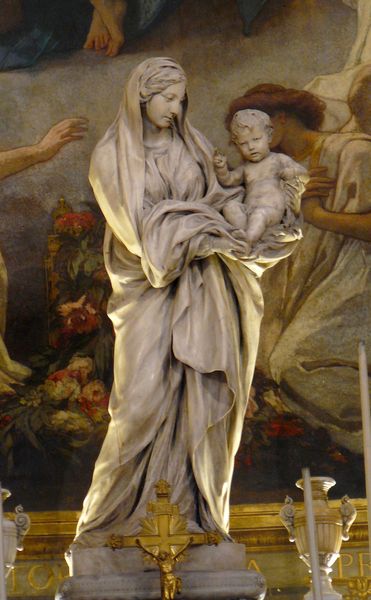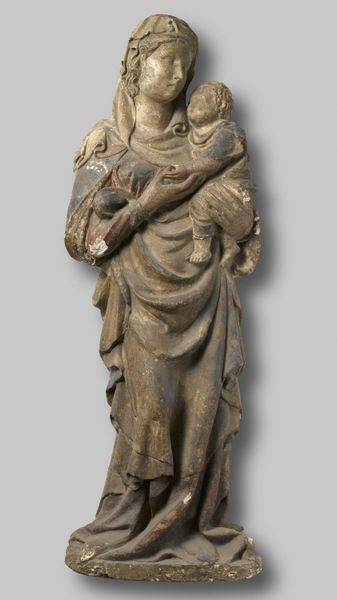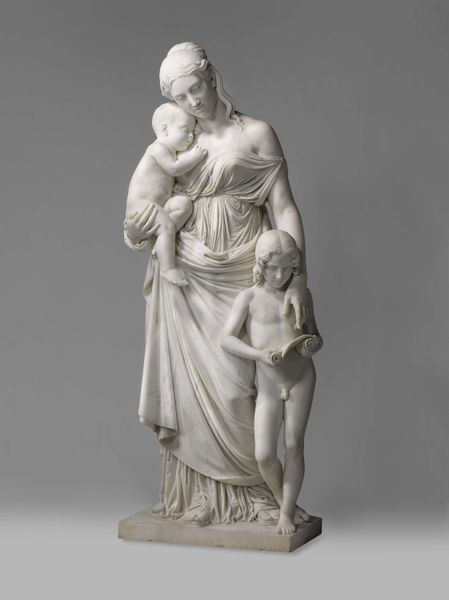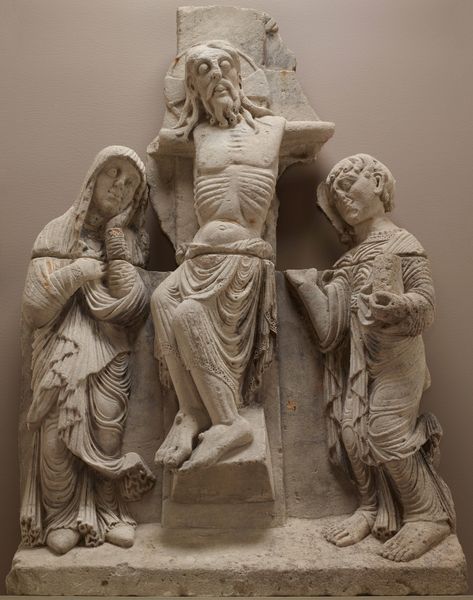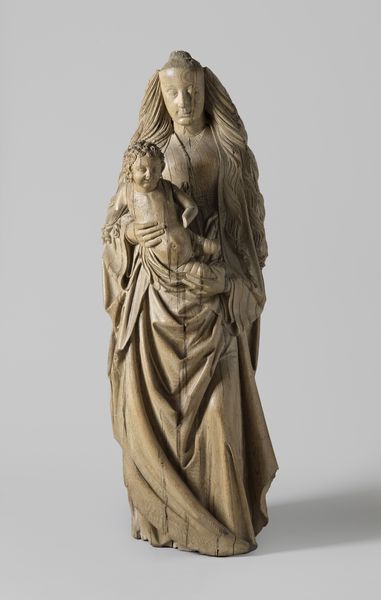
sculpture, wood
#
portrait
#
medieval
#
sculpture
#
gothic
#
figuration
#
sculpture
#
wood
Dimensions: 71 x 24 x 15 in. (180.34 x 60.96 x 38.1 cm)
Copyright: Public Domain
Curator: Here we have an arresting sculpture of the Virgin and Child, crafted from wood, sometime in the 14th century. It resides here at the Minneapolis Institute of Art. Editor: The sculpture has a haunting, ethereal quality. It gives the impression of a ghost, softened by gentle expressions of Mary and baby Jesus, especially their almond-shaped eyes. Curator: Yes, the piece resonates with the aesthetics typical of the Gothic period. Though created by an anonymous hand, this artwork draws heavily from iconographic traditions, most notably portraying Mary as the Theotokos, the God-bearer. In her role as an intercessor and holy mother, she acts as the archetype for a certain kind of sacred womanhood. Editor: In art historical terms, what impact does that representation of sacred womanhood have? Considering the patriarchal power structures inherent during the middle ages, is the power afforded by this role accessible for all women of the time, or strictly reserved only for an exceptional few, further entrenching existing inequalities? Curator: The symbolism embedded here has deep roots, reaching back through Byzantium. While Mary certainly occupies an exalted space, consider how her quiet humility – often symbolized by the mantle veiling her hair– provides a powerful model of contemplative strength, an archetype of submission but also inner power, for the many women. It speaks of spiritual fortitude even amid worldly constraints. Editor: I find that somewhat limiting. It seems this narrative still places womanhood in a specifically subservient position, further reinforced by class and gender stereotypes that limit women’s abilities to engage actively in religious and social institutions. Who decides what that divine power is in the first place, and for whom? Curator: But think of how those perceived constraints are imbued with agency. The folds in her robe aren’t merely decorative; they convey depth of feeling, inner strength even within the rigid social roles she embodies. It signifies not only sorrow and pity, but active empathy. This image became incredibly impactful in a symbolic context. Editor: I concede that this sculpture carries immense artistic importance but wonder at whose expense and for whose benefit the power is wielded, generation after generation. We cannot disregard who has been excluded from it. Curator: Ultimately, art like this prompts critical reflection. These enduring images provoke thought, challenging us to continually reinterpret their significance. Editor: It is that perpetual re-examination and historical situating of artworks that fosters growth and pushes for a more socially aware dialogue about our past and present.
Comments
minneapolisinstituteofart almost 2 years ago
⋮
This limestone Madonna’s stance may look a bit odd to a modern eye. Right knee bent and left hip jutting out, upper body tilted back and head bent sharply toward the Christ child on her arm, her body describes an S shape. Fluid and ornamental, the S curve is typical of sculptured figures in the Gothic period.
Join the conversation
Join millions of artists and users on Artera today and experience the ultimate creative platform.

